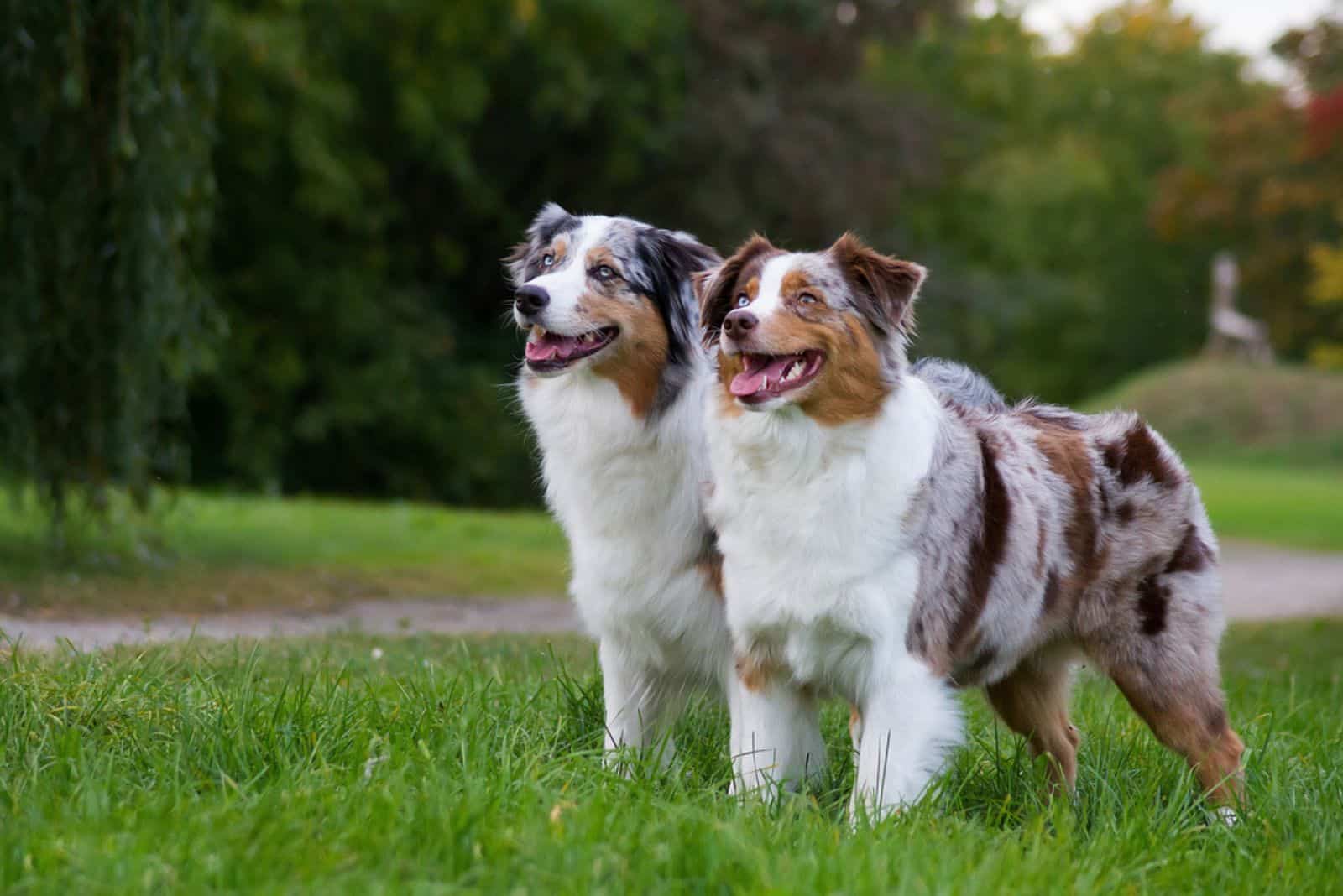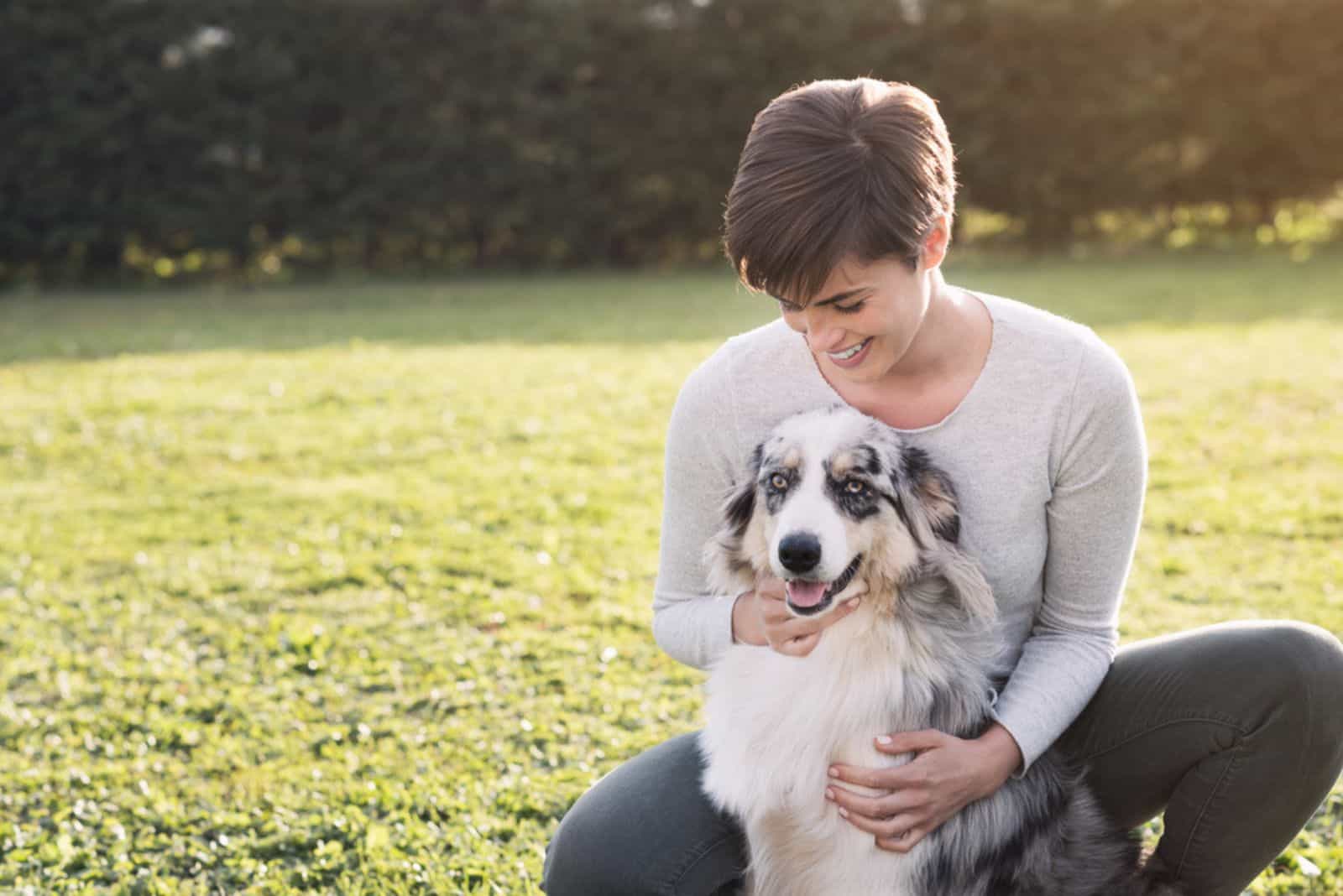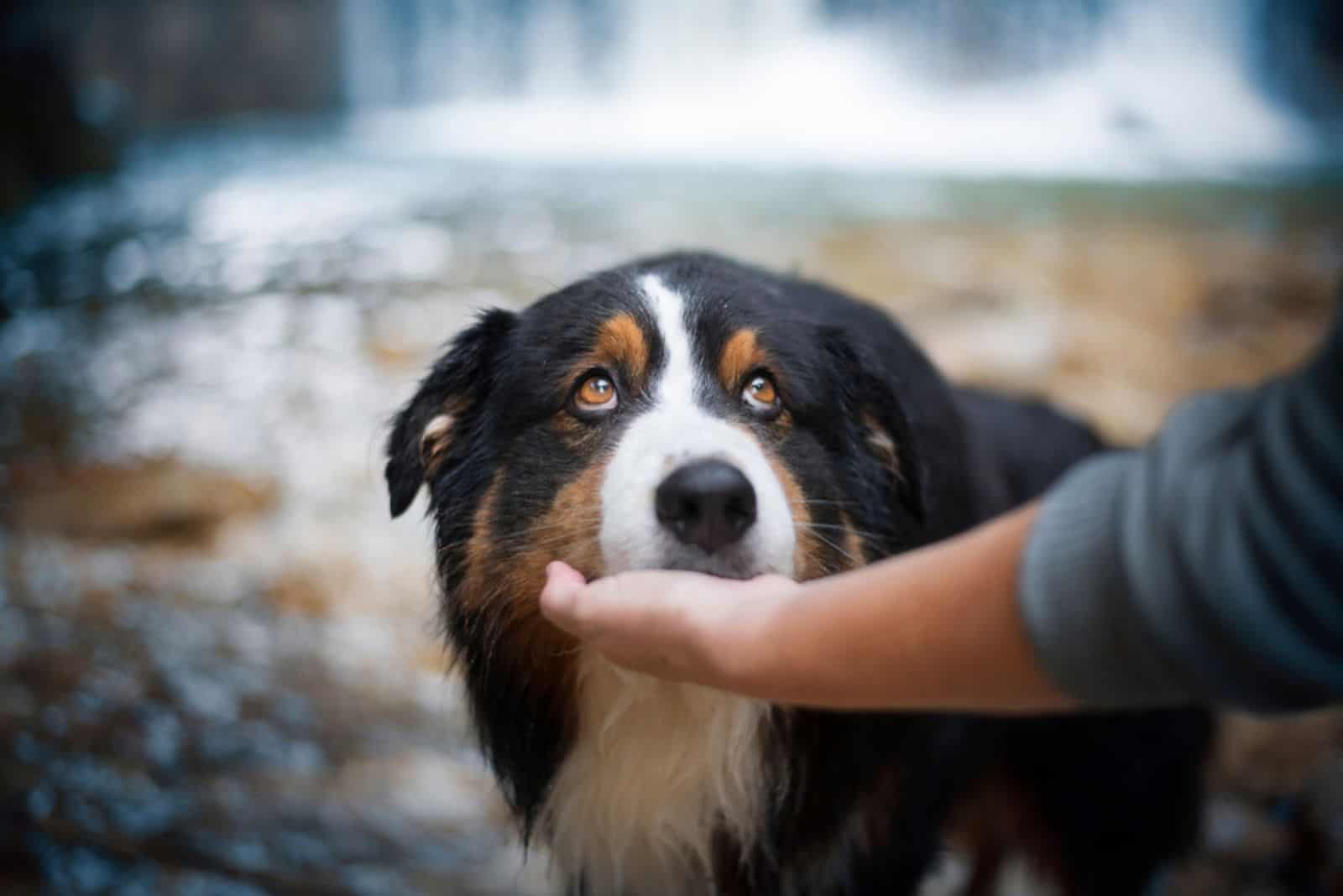Herding dogs are not known for their “needy” behavior. Despite their role of managing livestock, the purpose they were bred for can often be overshadowed by the environment they are in. So, why does my Australian shepherd follow me everywhere? It is adapting.
Not having the job it was meant to means that it is self-assigning tasks. However, it is much more complicated than this. Your Aussie shepherd following you everywhere carries both positive and negative implications.
To conclude which instance is the case with your dog, we will have to get closer to canine behavior practices. Learning why your dog acts a certain way is a lifelong process that helps you reap many benefits.
Good Boys And Girls Follow Leaders, Bad Ones Cling To Them

Among the numerous herding dog breeds, Australian shepherds are probably in the top five most individualistic type. Sure, the working Kelpie line is perhaps more about job performance than affection, but the Australian shepherd is pretty close.
Knowing the breed temperament and behavior is much more important than its looks. We humans are visual creatures, so we can sometimes make questionable decisions. If you got an Australian shepherd for companionship instead of work, the learning curve might suddenly become steep.
Not being able to go to the bathroom without your Australian shepherd stuck to you might irritate you, but that behavior can come from a good or bad place. The positive reasons indicate loyalty, trust, protective behavior, a request for something, or you are great company.
While most of them will make you, as an owner, feel great about yourself, the clingy behavior can be a sign of anxiety, fearfulness, separation anxiety, or boredom. These negative reasons for following you around have varying degrees of difficulty when it comes to fixing them.
In the vast majority of cases where owners come to me for advice on clingy dog behavior, the problem generally lies in a lack of understanding of the dog’s needs. We humans are more self-centered than dogs, and we often forget that dogs need our guidance.
The alternative to clingy is unruly behavior. A dog without guidance and leadership from its owner will take matter into its own paws and do whatever it pleases. Herding dogs like the Australian shepherd are more often unruly than clingy, so why is it different in your case?
1. Rewards Come Flying Down

Without a proper work assignment, your Australian shepherd might consider its life’s task to seek your guidance and instructions throughout the day. It can get pretty boring for a work-driven breed to not have an exact job.
Even the smallest “chore” you give it will be enough to make it fun. Maybe you encourage that behavior by praising the dog for following you. Saying “Good boy/girl” or giving affection for the behavior can be an incentive to keep doing it to earn your attention.
Another, perhaps even less healthy habit, is giving treats or food to your dog for following you. In this instance, you actually trained your dog to stick very close to you. Free food is never refused in the animal world, and particularly when you are a human dispenser.
2. Loyalty And Trust Beyond Measure
Being a good leader usually subsumes your dog is loyal and has trust in your decision-making. However, Australian shepherds that do not necessarily consider their owners as “pack leaders” will still be loyal and have trust in your role.
You might not even be aware of it, but your dog has “given” you a role that you are successfully performing, and it is somehow directly related to following you everywhere. You moving around can be connected to walk time, which is the most wanted item on a dog’s checklist.
3. Guard Duty

Building on to what we previously said about the owner not being considered as the pack leader, your dog might be following you to make sure you are fine. If you are feeling weak or sick or are generally feeling anxious, your Australian shepherd can clock in on it.
When a dog sees signs of weakness in a member of his pack or family, they will take charge of protecting you. Essentially, owners who are psychologically or physically unwell can “fall down the pecking order”, which means they are the ones needing protection now.
Australian shepherds are not the best guard dogs in the world, but it is part of their nature to be protective of its family members, so do not take it for granted or against them.
4. Dogs Love Structure And Routine
To be the most efficient version of ourselves, we intentionally or unintentionally create routines and schedules. Although it takes a while, dogs will adapt to it and anticipate what happens next.
We all have a tell that gives away what activity we are going to do next. Humans are pretty bad at reading body language, but dogs excel at it. A certain path you take, ways you pick up things or the things you touch themselves are often bulletins on your dog’s itinerary.
Before going to work, you probably have a well-established set of actions that are more than obvious to your dog. Going to the bathroom, getting dressed, picking up your keys, and then leaving the house is an average routine most dogs quickly figure out.
Sounds can trigger the same response. Jingling keys, the sound of a wardrobe being opened, running water in the shower, etc., all trigger a particular response.
5. Curiosity Killed The Cat, So Dogs Are Safe

In a normal family setting, your dog should be at the bottom of the pack in terms of “social status”. Regardless of where they are positioned, they will want to know what is going on at all times.
Being up to speed about the latest happenings in your home is part of the family dynamics. Humans are curious too, and tracking an owner’s steps might be a way to see, hear, or smell something new and fun.
Research has shown that older dogs are much less likely to express their curiosity in this manner and to this extent. Puppies and young dogs have much more energy and less experience, so filling up their memory with new, exciting things is how they experience the world.
We can consider this to be a common behavior when it comes to social relations within the pack, but there is still a limit when it becomes way too clingy.
6. Instinctual Behavior
To herding dogs, Australian shepherds in particular, creatures that seemingly walk without purpose need to be put on the right path. If you notice your dog is bumping you, touching you, or nibbling at your ankles, you might need to teach him you are the owner, not the sheep.
Children are the most frequent target for herding in Australian shepherds and other dogs from the same group. Due to their small stature and pretty relaxed daily schedule, the dog will believe a kid needs some “direction” throughout the day.
Of course, the genetics of the dog make it completely normal, but its interaction with us as human owners should be clearly delineated. Obedience training is a great way to teach your dog to differentiate between you and your family from a being that has to be herded.
7. Fearfulness And Anxiety

Insecurity and stress will take a toll on your dog. With plenty of causes of both those mental states, there is a big likelihood that your presence makes your Australian shepherd feel safe.
These types of behavior are not positive, as they encourage a state of mind that is not natural for a dog. Whether your Australian shepherd following you everywhere is something you like or not, fearfulness and anxiety require professional attention.
8. Separation Anxiety
Both of the previously mentioned behavioral problems can be symptoms of a much more serious issue, separation anxiety. Many dog owners have approached me with questions about either one, or the combination of both, with many question marks above their heads.
The pandemic has been detrimental to both our physical and mental health, but our canine companions suffered a 700% increase in separation anxiety cases in two years. These are worrying numbers.
Different dog breeds and even different individual dogs from the Australian shepherd breed can exhibit separation anxiety in a multitude of ways. Larger breeds will bark, become destructive, or even display signs of aggression towards other people or dogs.
Smaller breeds usually whine, whimper, have body tremors, and pee or poop around the house. Still, size is not as important as the individual character of the dog and all symptoms are represented in various “dimensions” of dog.
Following you everywhere is definitely one of those that are not specific to one group of dogs, but encompass all of them. Similarly, going with you to the bathroom, sitting or lying on you, and other clingy behavior is indicative of separation anxiety.
The Conclusion That Follows
Having eight rationalizations for “Why does my Australian shepherd follow me everywhere” covers most, if not all, the ground when it comes to the topic of odd behavior.
You are the best-equipped person to understand how intense this following around is and what mental state the dog is in. If you are having trouble with interpreting what your dog is trying to tell you, then definitely ask for help from a professional behaviorist or dog trainer.
Waiting for this behavior to end without knowing the cause is going to have a disappointing result for you – your Australian shepherd will simply find another way to channel its behavior, and it will most likely be very annoying to you. But hey, if it means your attention it is working.















